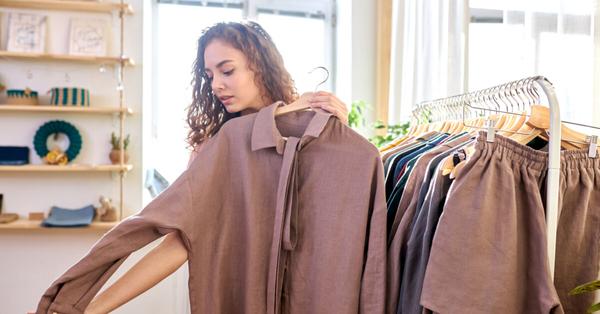Responsible Fashion: Embrace the Returnable Clothing Trend
Ten years ago, disposable fashion or "fast fashion" was gaining ground in France and elsewhere, with a disastrous ecological impact for the planet. But many consumers have backtracked and said goodbye to it, turning to more responsible clothing consumption. Ethical brands have developed and some of them have chosen to develop the clothing deposit.
Returning used sneakers or jeans
If you are a fan of eco-friendly fashion or eco-friendly shoes, you may have already wondered whether clothes can be returned users in order to recycle them. Brands such as 1083, Hopaal, Atelier Unes or Panafrica offer this concept of upcycling. Consumers can simply send the brand's product back to be recycled or transformed.
1083 recently invented the "infinity" concept and designed a recycled and recyclable fabric. She partnered with Hopaal. Together, the two brands decided to create a returnable denim jacket that can be easily recycled. This jacket made in France therefore has something unique, it is not disposable… Consumers have the option of returning the garment once worn.
@pqben42 I actually learned how to drive… Had my first car in Japan back in the 80s. Good old navy days 😌
— Tracy Allen🦀 Fri May 14 16:26:24 +0000 2021
Developing the circular economy
In Europe, 4 tons of clothing are thrown away each year on average. A French person alone throws away around 30 kilos of clothes per year and only 2.5 kilos per year are recycled. And the waste of textiles does not stop there. Until now, brands have voluntarily destroyed their unsold items. Fortunately, the anti-waste law voted by the deputies will oblige professionals from 2022 to donate or recycle textiles and to prohibit the destruction of clothing.

Eco-responsible brands like Hopaal are in favor of a circular textile economy. Abandoned materials (plastic bottles) are first collected, then cleaned and sorted. Then begins the stage of recycling and spinning. After weaving and making from recycled polyester, the jacket is used by the consumer, then returned free of charge thanks to the deposit system. Another important element, the jacket is made of a single material to facilitate its recycling.
Rethinking the economics of clothing
Until now, brands have only thought about designing their products and then selling them to customers. In the future, they will certainly have to think about the end of life of the clothes they sell. The deposit should develop more in fashion, giving consumers the opportunity to make a gesture in favor of the environment. 'they put on the market, with, of course, a transitional period but it is essential,' underlines Thomas Huriez, founder of 1083 in remarks reported by Novethic.
In the future, more and more brands are expected to move away from fast fashion and into upcycling, in order to extend the life of clothes and give them a second life. “We are convinced that thinking about the end of life of the object even before its design will become the norm in the coming years, thinks Stuart Ahlum, co-founder of Thousand Fell in remarks reported by Le Monde. There is a real waste management problem in the fashion industry, and the only way to solve it is to worry about what happens to our products once they are used. »
At the moment, we are still in the infancy of this new way of consuming, the cost of labor being higher with the deposit as well as the price of clothing for the consumer. Clothes are generally more expensive because they are more resistant. To which you must add twenty euros for the deposit. Not sure that everyone can take the plunge.
Read also:







